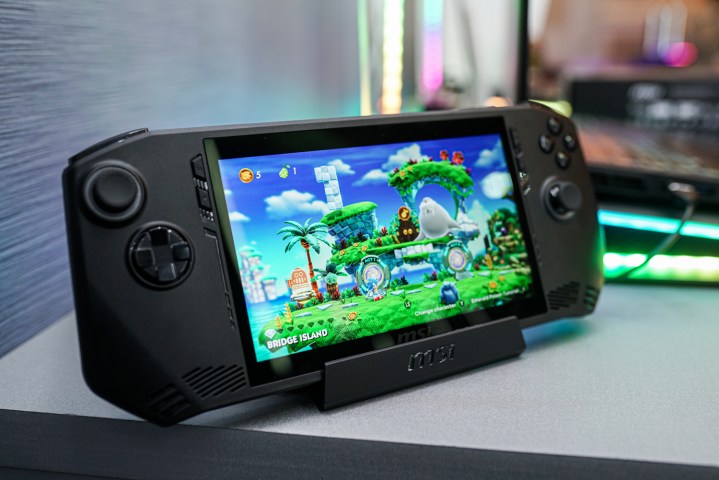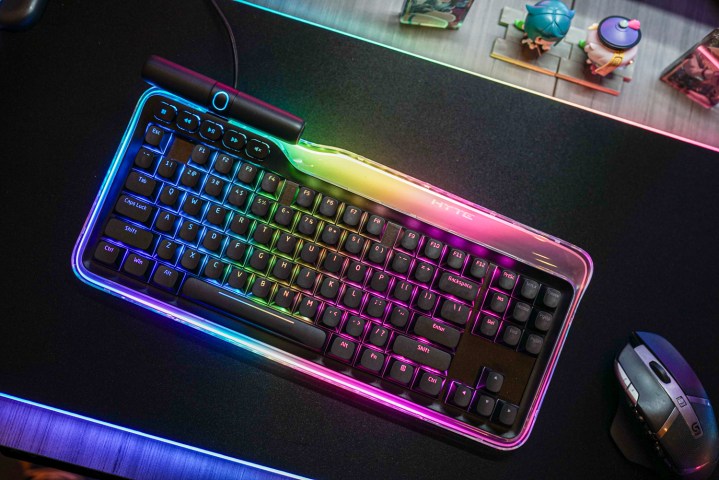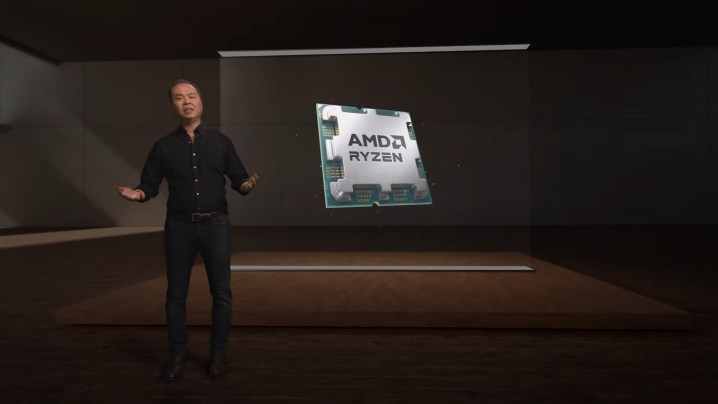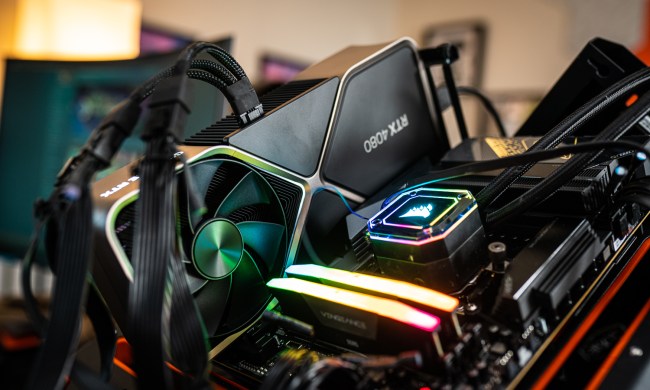
AMD, Nvidia, and Intel all came out swinging at CES 2024, laying the foundation for PC hardware announcements before other brands piled on. We saw a ton of great PC hardware this year, but only a handful of parts rose above the rest.
After spending several days scouring convention halls, we put together this list of the most impressive PC hardware we saw at CES 2024.
Nvidia RTX 40-series Super

Nvidia did everything I wanted with the RTX 40-series Super refresh. The poor-value RTX 4080 is now a high-end champ at $1,000, the RTX 4070 Ti feels like a proper $800 GPU with its AD103 treatment, and the RTX 4070 Super improves on the already compelling midrange GPU, offering up a big jump in performance for the same price.
Gamers have given Nvidia a lot of flak this generation, and for good reason. It’s been the driving force behind higher GPU prices, mainly on the back of the RTX 4080, RTX 4070 Ti, and RTX 4070. This Super refresh feels like a course correction. It’s Nvidia recognizing it pushed prices too far by bumping specs or cutting prices in the places where it matters.
My main hope is that we see some other GPUs get the Super treatment, particularly the notorious RTX 4060 Ti and the solid, if unimpressive RTX 4060. This is still a solid step in the right direction, however, and its sets Nvidia up to remain at the top of the GPU heap until we finally get a taste of Blackwell.
AMD RX 7600 XT

We all knew it was coming. The RX 7600 XT just makes sense considering every single one of AMD’s current-gen GPUs received the XT branding except the RX 7600. Although there was some speculation that AMD would refresh its lineup to compete with Nvidia’s Super refresh, AMD decided to play in a price range that Nvidia isn’t touching.
At $330, the RX 7600 XT is positioned in an interesting spot. It’s more expensive than the RTX 4060, though there’s a good chance it will be faster, and it undercuts the RTX 4060 Ti by a significant margin. Perhaps the most significant thing about the RX 7600 XT is that it comes with 16GB of VRAM, reaffirming AMD’s drive for high capacities of memory on cheaper GPUs.
That 16GB is still squeezed through a 128-bit bus, however, and the underlying GPU is the same on both the RX 7600 XT and RX 7600. AMD is claiming some large performance improvements, however, so we’ll have to wait until we’ve tested the GPU to see how it holds up.
MSI Claw

Is a handheld PC hardware? I don’t care — this is my list! It’s been a foregone conclusion that we’d see the major laptop brands all release a handheld gaming PC at some point after the introduction of the ROG Ally, but the MSI Claw actually manages to do something different. It’s the first time we’re seeing Intel’s Meteor Lake platform on a handheld.
That might not seem significant, but the MSI Claw is a representation of how Intel’s approach to decoupling the different elements on the system on a chip can lead to new, exciting form factors. It also introduces Intel’s XeSS to handhelds, providing some much-need AI supersampling to aid in running demanding games.
MSI doesn’t have the software nailed yet, and I’m still partial to the Steam Deck in terms of comfort. But the MSI Claw is an exciting step for handheld gaming PCs, with Intel finally entering the fray and providing PC gamers on the go with more options to play.
Hyte Keeb TKL

It’s really hard for a keyboard to stand out, but the Hyte Keeb TKL does nothing but stand out. It’s one of the most unique keyboards I’ve ever seen, and it certainly left an impression at CES 2024. The main draw is the transparent frame, which Hyte stuffs full of RGB LEDs. These illuminate the body of the keyboard, making it appear as though you’re typing on a cloud of RGB light.
It looks stunning, but the Keeb has more than looks going for it. This keyboard uses a gasket mount along with four layers of sound dampening internally. The result is an endlessly satisfying keyboard to type on, one which can hang with some of the more high-end enthusiast options on the market.
Hyte packed in other goodies as well, including a dual-mode volume wheel and a unique feel for the dedicated media keys. What stands out most is the price, however. At $180, the Hyte Keeb TKL is extremely competitive with enthusiast-grade keyboards, and it doesn’t sacrifice much sound or feel in the process.
AMD Ryzen 8000G

Budget gamers should be thrilled that APUs are officially back. AMD introduced its Ryzen 8000G CPUs at CES this year, which combine not only up to eight Zen 4 CPU cores, but also up to a Radeon 780M mobile graphics chip. This is the same graphics chip we’ve seen at work in handhelds like the Asus ROG Ally, but with more power available to it, AMD says it can run even faster.
In real-world use, AMD says the top Ryzen 8000G CPU can hit 60 frames per second (fps) at 1080p in demanding games like Alan Wake 2 and Cyberpunk 2077. That’s with lowered graphics settings, but that’s still seriously impressive performance for a PC without a dedicated graphics card.
Even more impressive is the price. The top chip runs $330, with the other options getting cheaper from there. That vastly lowers the barrier to entry for PC gaming. AMD has sat out on powerful APUs for the last few years, and the Ryzen 8000G processors are a resounding return to form.
Asus ProArt case

Asus’ ProArt range hasn’t received a ton of attention, but its new PA602 certainly turned our heads at CES. It comes with the same minimal ProArt branding as previous designs, but Asus totally overhauled the internals. This isn’t just a great-looking case — it might be one of the best PC cases you can buy.
The front of the case is perforated and comes with two extra thick 200mm fans. They’re 38mm thick, to be exact, and they push a ton of air throughout the case. Even with that, Asus packed in enough room for a 420mm radiator, or one of Asus’ own ProArt all-in-one liquid coolers. There’s a ton of airflow through this case, which is great for creators running demanding workloads for hours on end.
On top of that, the case comes with a removable dust filter that has a smart feature packed inside. There’s an indicator on the side that will tell you when it’s time to clean out the removeable dust filter at the front of the case. Going beyond, the case has a lock for the power button, a dedicated button for PWM control, wheels and caster support, and even a built-in support for your graphics card.
This might be the ultimate PC case. The airflow looks excellent, and it comes with some smart, essential features. It doesn’t come with a typical gamer aesthetic, which is where you see the lion’s share of innovation in PC cases. Even without that, you shouldn’t ignore this case.




